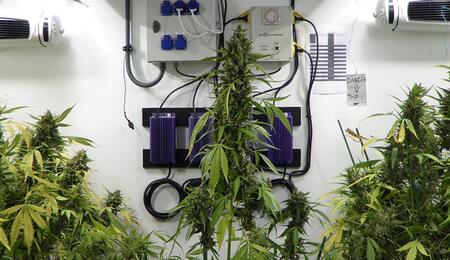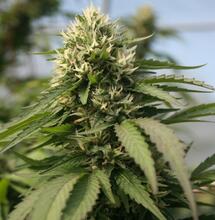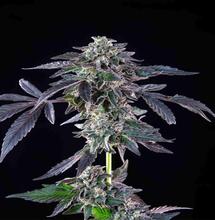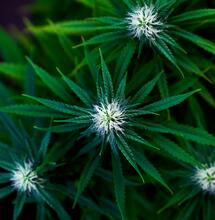Frequently Asked Questions: About Flowering Cannabis

How can I better support my plants in bloom?
It is a good idea and very helpful to use bamboo cane and to drive them to the base of the medium. When you do this avoid placing the stick or any support directly into the root zone, so simply place down the side of the pots in a circle. This method will allow you to then tie your vulnerable heavy branches to each part of the canes. This is a simple and effective method that is used by outdoor farmers worldwide, to help support fruit trees and larger crops.Why do plants need 12/12 to flower?
Plants have a body clock like humans and this is the Meridian Cycle. Cannabis plants being a phototropic plant responds to the darkness period to indicate flowering. Even though most growers will veg plants on 18/6, you could veg a plant with up to 13 hours of light and it would still remain in a pre-flowering state. Ultimately the cannabis plant will respond to 12 hours or less darkness period as in nature it is used to a light regime of 12 hours declining to 6 hours over winter.What is meant by the stretch?
The stretch simply reflects the journey your plant takes on once it receives signals that the darkness period has increased. This is the point when plants would push up and stretch as highly as possible to make that final push, before the huge task of delivering high grade flowers. Depending on the strain you are working with, indica varieties of cannabis will tend to stretch approximately 100%-150% of its original size when in the growing phase. Sativa strains on the other hand can be challenging and are notorious for their reach for the stars. There are ways to control the stretch such as the distance of lighting, heat, plant training and other ways to keep that stretch of 200%-300% to a minimum.
How can I get bigger buds from my lowest branches?
If you have been in the practice of growing one way for so long, you can often get caught up in bad habits. You only have to spend a few minutes on Instagram looking at how the American growers are setting the standard, to think there must be a better way. The idea of popcorn and low producing lower buds should not even be an option, when the plant should be using the energy it is wasting on the parts that are most relevant. Once you flower your plants, strip away anything that is 30-60cm from the top of the medium. So you will have a clear area and an upper canopy that will begin 30-60cm above the main stalk.The very tops of my buds are bleach albino white. What is this?
This is bleaching from excessive light and is not some miracle strain of albino white flower. Many growers on forums will say how these buds when tested are sky high in THC and they are the evolution of cannabis. As strange as it is to see the chlorophyll completely break down in a flower, this amount of stress will often cause hermaphrodite problems from my experience. Bleaching of buds is common with LED as the penetration can be overwhelming for the tops of the plants.What should I do if my crop has seeded?
If you have a commercial crop that you were relying on, then finding seeds deep inside the buds, can get alarm bells ringing of how early on the plant was hermaphrodite. If your entire crop has become seeded and the plant spent most of its valuable energy and nutrients to produce unwanted yellowing seeds, then finding out what caused it is a good start. Ultimately you can make extracts or isolator with a seeded crop and cut your losses there, so in the meantime trying to prevent the same thing happening again is key. Usually something that occurred within the first 4 weeks of flower, which could have been trauma, stress, cold or hot temps, disruption in light cycle or a number of variables.
Should I keep pruning the plants throughout flower?
The stress it can cause the plant is unnecessary, especially as the plant should be spending all of its energy on stem, leaf and flower production. As mentioned above stripping the plant of all the irrelevant small wire like branches is a must. Not only will this keep the airflow around the bottom part of the plant at a maximum, it was also prevent insects and unwanted pests in the medium infesting your plant so quickly. The Jungle Boys have perfected the one node and flip technique which means, remove everything up to one node and flip.Do enzymes make a difference when feeding them in flower?
Enzymes are much underrated in terms of what their role is amongst nutrient companies. As important as they are to our digestive systems as humans, enzymes fed to plants have the exact same role of breaking down food quickly and efficiently. When used in conjunction with the other flowering based nutrients, enzymes perform the task of accelerating the metabolism of the plant. In the same way beneficial bacteria have a symbiotic relationship with the root zone, enzymes work in accordance with the roots also.What organic nutrients can be used for flowering?
It can be quite overwhelming when you enter a busy grow and you try to discreetly look at the plethora of blooming products. Understanding how NPK is calculated from a PPM perspective can be quite daunting, so seeing all those various NPK ratios can be confusing. Especially with many companies linking their own brand as part of a set, you can end up leaving with something more harmful than good in the wrong hands. The best way to grow organically is to use worm humus, bat guano, seabird guano, wood ash, bio char and molasses. As long as you can add a new top layer of any of these and top up with a molasses based nutrient, then you will find that there will be plenty of available nutrients working at a slow organic friendly rate.How much P and K do cannabis plants need in flower?
A very commercial ratio that has been used successfully for many years is 0-13-14. There have been many nutrient companies who have aimed for this flowering ratio. Many organic nutrient companies such as Biobizz offer low ratios with their organic range whilst some hydroponic nutrient companies can offer ratios of up to 0-50-30. Knowing when to apply these bloom boosters is the difference between your plants looking like the magazines or a range of deficiencies popping up overnight. It is a good idea to always follow the feeding chart and especially when using high doses in the last part of flower. Flushing these salts out later can be harder than most growers think.Does it make a difference if the trichomes are clear or cloudy when harvesting?
This can be down to preference, on depending from a medical perspective or a social perspective. The rule of thumb is the clearer the trichome, then the characteristics of the final flower will be high in THC and lowest in CBD. If you can turn the trichomes to a milky silver, then the THC is degrading somewhat and becoming more CBD as well as other cannabinoids. Finally when your trichomes are a deep amber, this is when your cannabinoid range will be at its most narcotic. Once cannabis flowers have dried, the curing process will further degrade the THC into more CBD and sedative cannabinoids. This is why when you see dark hash, this shows you the degrading process of THC to CBD and CBN.What colour should the hairs be on the plant?
The pistils on the plant will initially throw out root like white hairs, which will develop into calyx and swell into buds. To simply say you should harvest based on the hairs becoming maroon red is not the best practice. It should be based on three factors in my opinion and they are resin content of buds and leaves, how swollen the calyx are and finally the colour of the trichomes, however I always leave the plant until the last stage possible so always expect an amber trichome with swollen thick buds.When does the first day of flowering begin?
The first day of flowering begins when the plants receive 12 hours of darkness of more. There will a transition period when the plant has gone from high nitrogen feeds to transitioning to higher feeds of Phosphorus and Potassium. Following your grow chart at this point will tell you to apply 2-3ml per litre and work your way up to 5 ml through weeks 2-7 then flush. So on the feeding chart it will clearly be displayed as what is the growing stage and what is the flowering stage, however from the plant's perspective it is when it receives 12 hours of dark.Should I stop feeding Nitrogen immediately?
During the flowering stage, the cannabis plant will actually grow more leaves and new branches than it did in veg. To completely shut the plant off from high nitrogen like many nutrient companies advise growers is not the best. It is a good idea to keep a constant source of available nitrogen around that can applied to the medium as a wet or dry solution. A great tip for organic growers is to use worm humus or blood meal. This is really soft and friendly and will keep your grow medium super charged throughout the duration of the flowering cycle.What is the correct way to flush cannabis plants?
Technically water is a solvent so using water as a solvent, allow the old salts that have been building up within the grow medium and around the roots to be washed out. Sometimes you can finish a full grow and even see the chalk white salt build up around the base and inside of your plastic pots. With this in mind, the way I personally flush is to add the same amount of water to the size of the pot. So for example if I was working with a 10 litre sized pot, I would feed 10 litres of water through the medium each time during that flush phase. So rather than water say every 2 days and allow medium to totally dry, I will feed a large amount every 3-4 days. This allows me to wash my medium of enzyme rich solution up to 4 times in the last 2 weeks with dry period in between, meaning a total of 40 litres of enzymes have passed through.
What colour should the ash of my joint be when burning?
Badly flushed cannabis is the same as a surgeon operating yet being careless when it comes to the final stitching up job. It does not matter how frosty of loud your plants are, if there is a tight sensation and harsh flavour, then this is nothing to be proud of. If it means to flush with my method for the last 3 weeks, you will ensure the lightest and whitest ash possible. The joint will feel like air to breath and the flavours should linger in your mouth and around the lips. If you have a white grey ash but no real flavour or kick, then you need to work on your growing game but if you are growing charcoal black ash that could stain a glass ash tray, then begin to think of how much excess salts are in your flowers By Stoney Tark, photos courtesy of Dinafem
S
Soft Secrets



